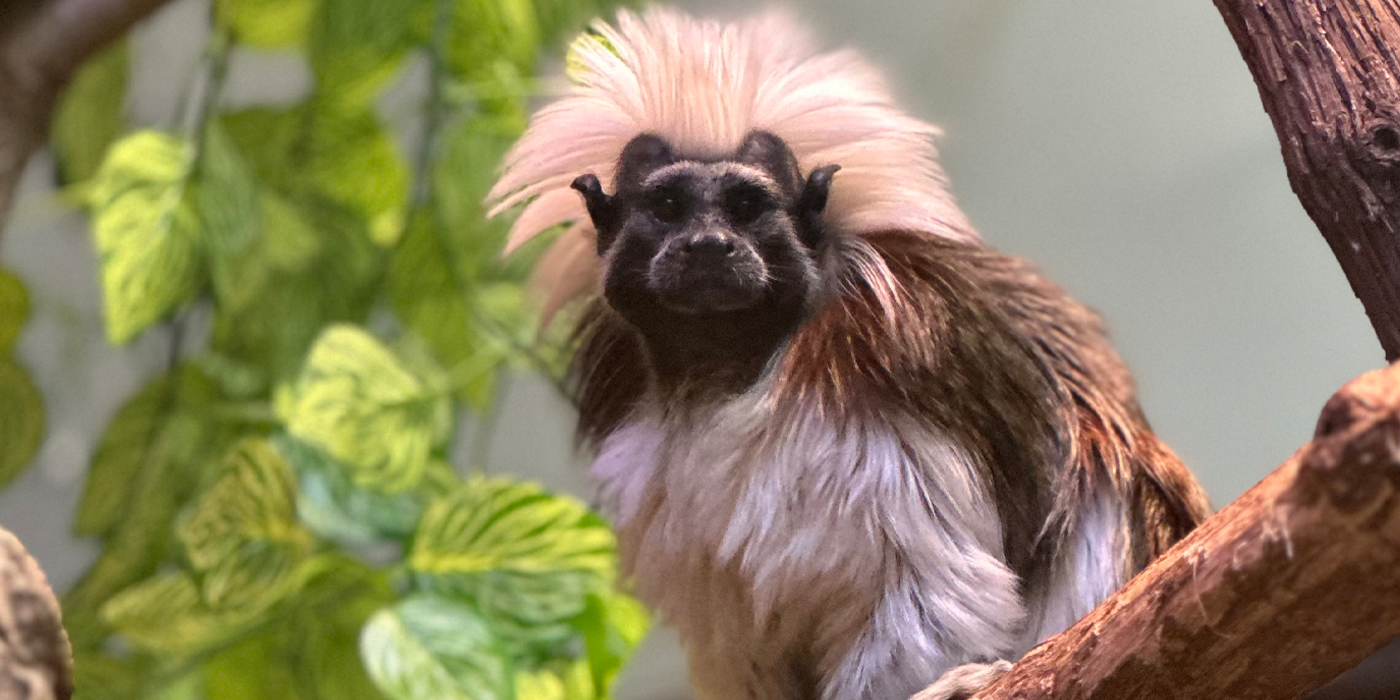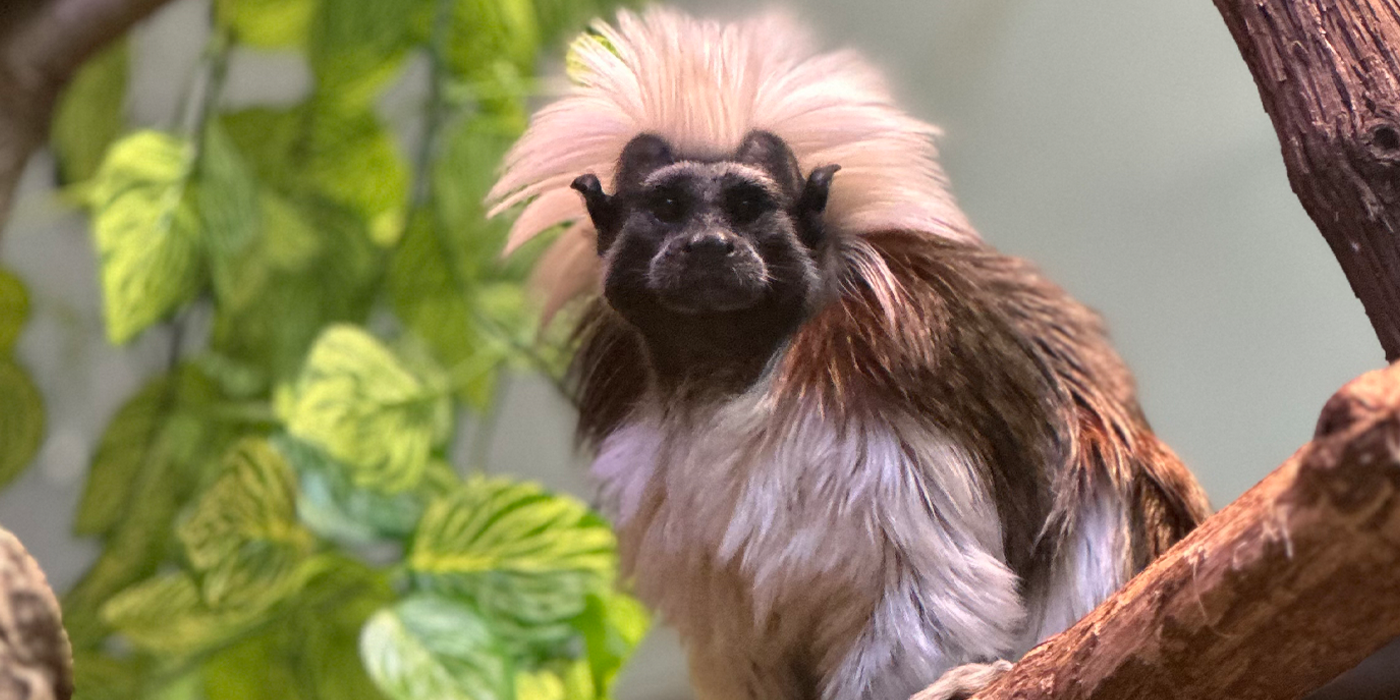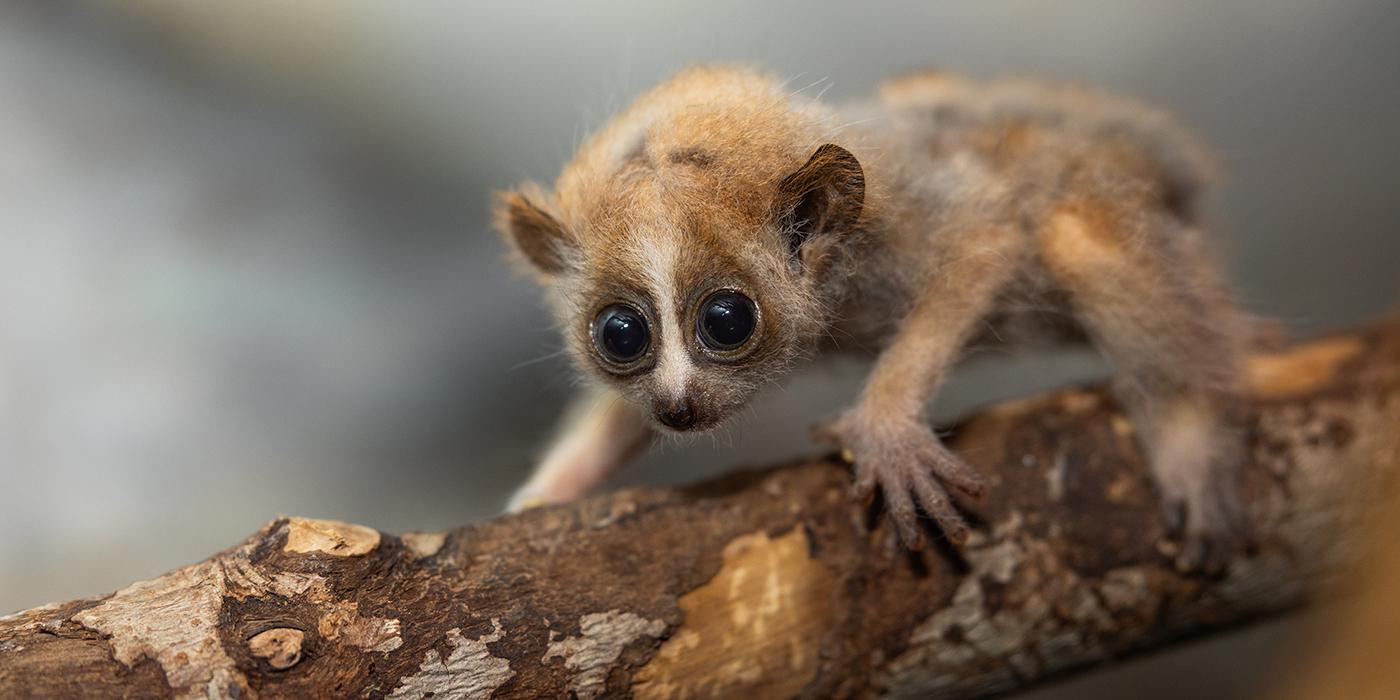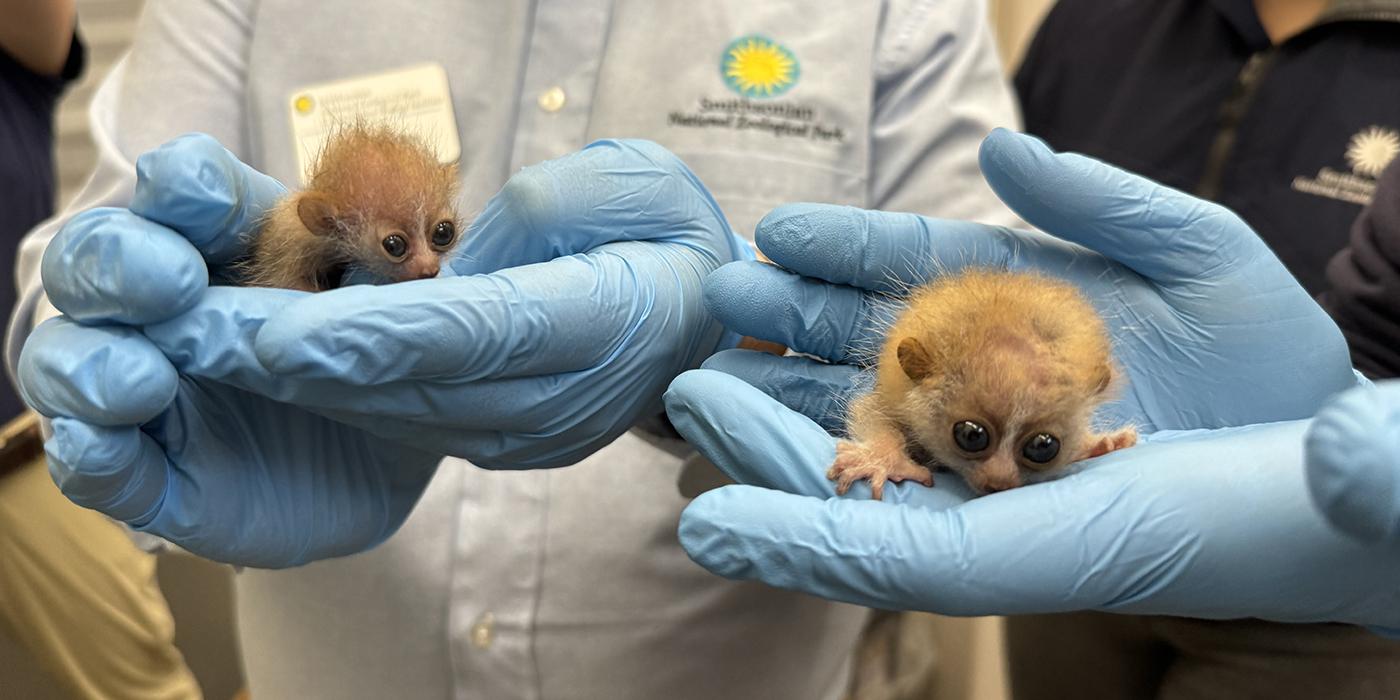Public Can Help Name Cotton-Top Tamarins at the Smithsonian’s National Zoo and Conservation Biology Institute
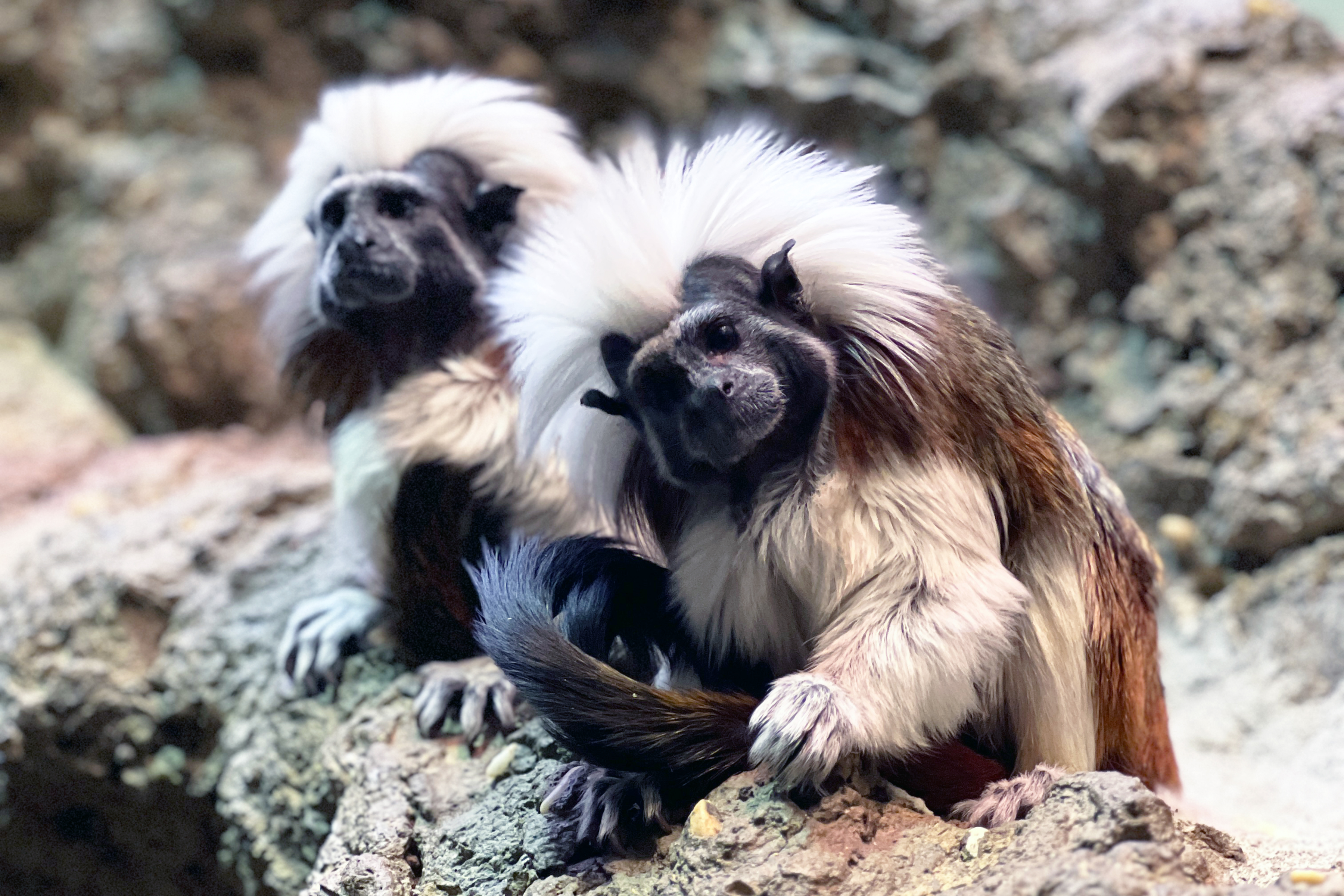
The public is invited to help name two cotton-top tamarin sisters at the Smithsonian’s National Zoo and Conservation Biology Institute. Photo credit: Chelia Chong, Smithsonian’s National Zoo and Conservation Biology Institute
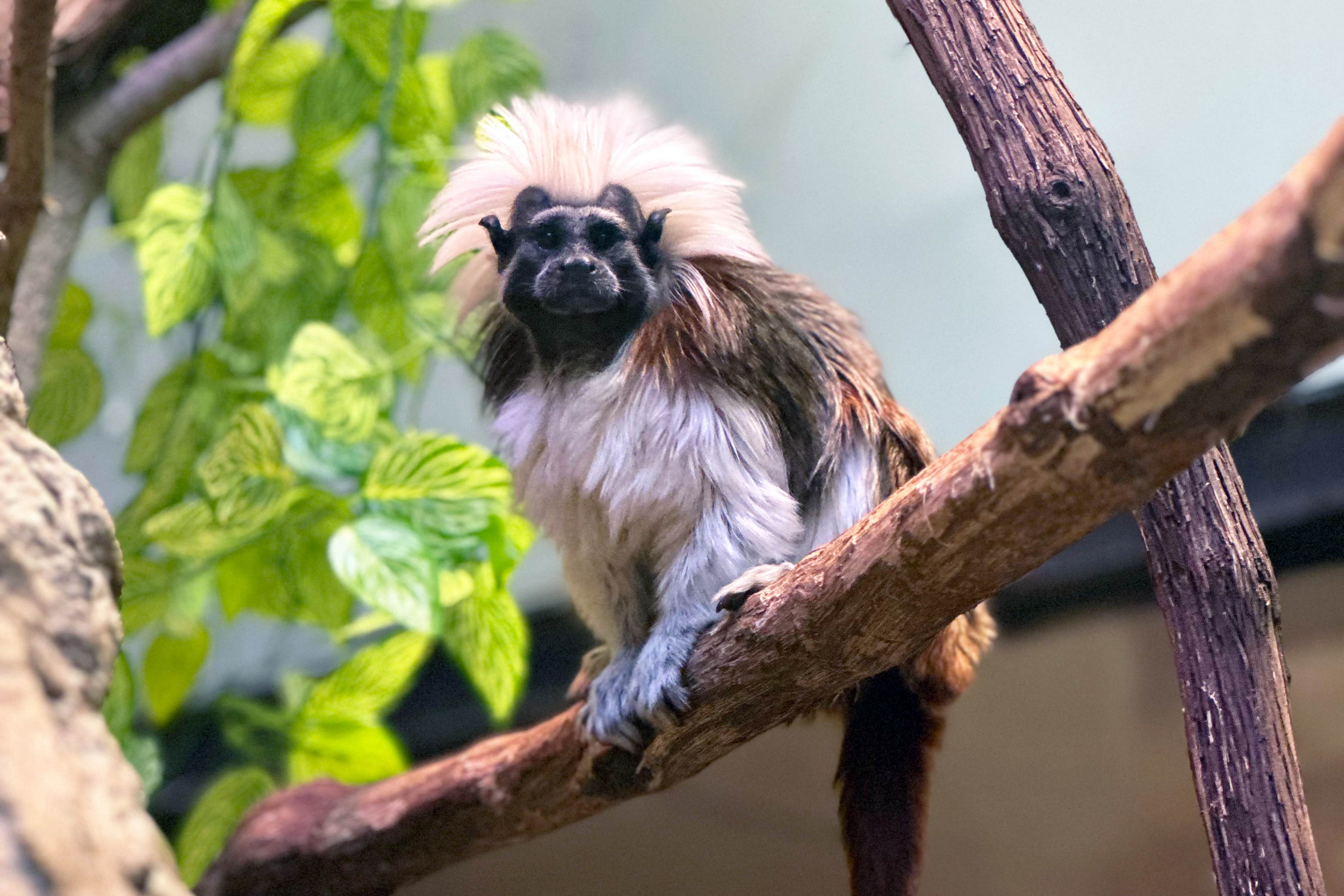
It has been 50 years since cotton-top tamarins—known for their signature white coif—have lived at NZCBI. Photo credit: Kenton Kerns, Smithsonian’s National Zoo and Conservation Biology Institute
Starting today, Feb. 5, the public will have an opportunity to vote on names for two cotton-top tamarin sisters at the Smithsonian’s National Zoo and Conservation Biology Institute (NZCBI). The newest residents at the Small Mammal House have big personalities—and even bigger hair.
After moving from the Ellen Trout Zoo in Lufkin, Texas, a pair of cotton-top tamarin sisters, who are 8 and 9 years old, put down roots at the Zoo in mid-January. It has been 50 years since this species—known for their signature white coif—has lived at NZCBI. To celebrate their return, keepers are inviting the public to help select the sisters’ names. Voters can select their favorite names today through noon Friday, Feb. 9, on the Zoo’s website. After the poll closes, the winning names will be announced across the Zoo’s Facebook, Instagram and X platforms.
Small Mammal House keepers provided three name pairings for the cotton-top tamarin sisters. The pair that receive the most votes will be bestowed on the tamarins. The choices are:
- Shakira and Ziggy: inspired by the Colombian pop singer and the alter ego of David Bowie, English rock star Ziggy Stardust
- Toph and Suki: inspired by characters from the series Avatar: The Last Airbender
- Thistle and Zinnia: inspired by the bright-blooming, puffy flowers
The Small Mammal House team hopes the sisters will inspire visitors to care about this critically endangered species. Native to Colombia, wild cotton-top tamarins face threats including habitat destruction, deforestation and capture for the illegal pet trade.
Cotton-top tamarins’ signature hairstyle is fashionable and functional. When on alert, these monkeys will raise the hair on their heads in an attempt to look larger. Although the Zoo’s sisters look very similar, keepers use their physical traits to tell them apart. One tamarin has a larger tuft of hair on top of her head, a narrower face and a gap in the hair on her tail. Of the two, she seems to be braver and more curious than her sister.Often, she is the first to investigate their food pan and enrichment items, while her sister takes a more cautious approach to new things.
Small Mammal House visitors can see the cotton-top tamarins and meet an animal keeper to learn about the fascinating world of small mammals at 10:30 a.m. and 2 p.m. daily. While the tamarins are acclimating to their new habitat, keepers say they tend to be most active during feeding times, in the early morning and between 1 and 2 p.m.
# # #
Photo 1 caption: The public is invited to help name two cotton-top tamarin sisters at the Smithsonian’s National Zoo and Conservation Biology Institute. Photo 1 credit: Chelia Chong, Smithsonian’s National Zoo and Conservation Biology Institute
Photo 2 caption: It has been 50 years since cotton-top tamarins—known for their signature white coif—have lived at NZCBI. Photo 2 credit: Kenton Kerns, Smithsonian’s National Zoo and Conservation Biology Institute

